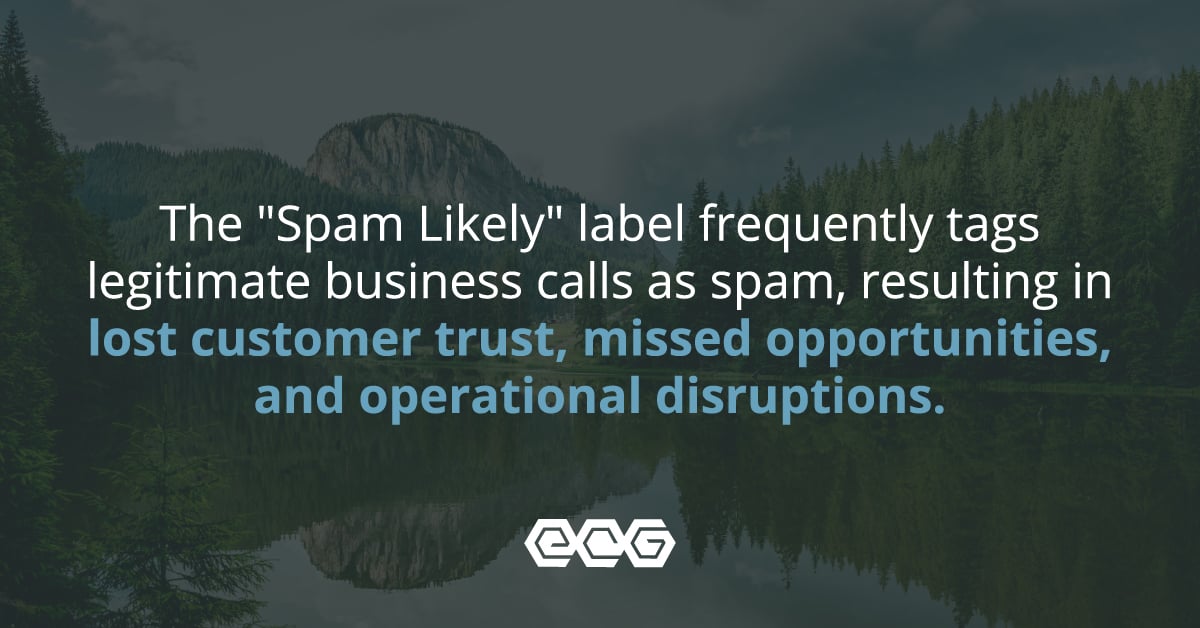Business-to-consumer communication is critical for business success, making the increasing prevalence of "Spam Likely" labels on calls a frustrating obstacle. This mislabeling typically results in customers blocking calls from businesses or never receiving them on their devices in the first place, leading to complications like miscommunication and increased costs caused by loss of sales.
According to Neustar, 82% of businesses say over 20% of their calls are mislabeled as spam.1 Luckily, technology leaders have developed phone system features and products that help businesses combat the “Spam Likely” challenge when calling customers. Read on to learn more about the impact of the “Spam Likely” label on your business and the endpoint devices you can implement to address this issue.
What Is the "Spam Likely" Label?
The "Spam Likely" label was designed to shield consumers from unwanted solicitations. However, it frequently tags legitimate business calls as well, creating far-reaching implications such as:
- Trust Erosion: Customers may hesitate to answer legitimate business calls, eroding trust over time.
- Missed Opportunities: Essential communications like customer support and time-sensitive offers fail to reach the intended recipients.
- Operational Disruptions: Businesses must invest additional resources in alternative communication strategies, often at a greater expense and lower efficiency.
The only way to combat this misidentification challenge is to leverage innovative technology solutions that bridge the gap between businesses and their consumers – ensuring critical calls do not get lost in translation.

Which Endpoint Devices Help Combat Mislabeling?
To mitigate the impact of the "Spam Likely" label, technology leaders have developed new features in endpoint devices that improve call identification and foster seamless communication. Here’s a look at a few of these solutions:
Cisco
Cisco has introduced sophisticated security and call identification features into its devices. These advancements use Cisco’s vast threat intelligence network and analytics to refine the call labeling process so that businesses can connect with their consumers without being labeled as "Spam Likely."
HP/Poly
HP/Poly integrates advanced call analytics and identification technologies into their devices. These features aim to accurately differentiate between legitimate business communications and actual spam, ensuring important calls reach consumers as intended.
Yealink
Yealink is enhancing the call experience with its AI-powered call-filtering technology. This technology meticulously scrutinizes call patterns and metadata, reducing the chances of business calls being wrongfully labeled as spam and improving the accuracy of call identification.
Navigate "Spam Likely" Challenges With ECG
The "Spam Likely" label poses a significant barrier to effective communication, potentially damaging the trust between businesses and consumers. Fortunately, technological solutions from Cisco, HP/Poly, and Yealink offer a path forward to better manage this issue and ensure critical business communications are accurately delivered.
At ECG, we're committed to helping businesses overcome the "Spam Likely" challenge. We’ll leverage our expertise in voice network engineering and optimization to provide customized solutions that ensure your calls are received as intended – and strengthen your connection with consumers.
Reach out to ECG today and let us help you navigate the "Spam Likely" landscape effectively.
Source:


